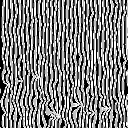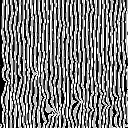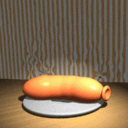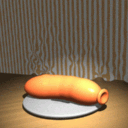Ray Tracing in Non-Constant Media
Overview
This is joint work with Eric Languenou from IRIN at the University of
Nantes, France. Back when I was a PhD student and Eric was doing his post-doc
at the University of Toronto we decided to model the shimmering effects due
to heat. The following research is the fruit of this collaboration which
started in Toronto and was polished up in the suburbs of Paris.
Following is the abstract of the paper
which we presented at the
7th EUROGRAPHICS Workshop
on Rendering which was held in Porto, Portugal, June 17-19, 1996. The
paper will be published in a Springer-Verlag monograph.
In this paper, we explore the theory of optical
deformations due to continuous variations of the refractive index of the air,
and present several efficient implementations.
We introduce the basic equations from geometrical optics, outlining a general
method of solution. Further, we model the fluctuations of the index of
refraction
both as a superposition of blobs and as a stochastic function. Using a
well known perturbation technique from geometrical optics, we compute
linear approximations to the deformed rays. We employ this approximation and the
blob representation to efficiently ray trace non linear rays through
multiple environments. In addition we present a stochastic model for the ray
deviations derived from an empirical model of air turbulence. We use this
stochastic model to precompute deformation maps.
Results
I will try to put some mpegs of the video that we showed at the Workshop
since the following still images do not do justice to the method.



Three frames from an animation using the "stochastic rendering" algorithm.
The deformations are modelled as a random process and generated directly.
The turbulence is adevcted by the heat field and travels upwards. Notice the
"eddie-like" structures which would be hard to fake using standard texture
mapping techniques.



Three frames from an animation of a camera flying around a particularly
hot "hot dog". The heat field is modelled as a superposition of blobs which are
advected in a turbulence. This sequence demonstrates that our model is
truly three-dimensional and coherent from frame to frame. In fact there are
no restrictions on the scene to be deformed, e.g., notice that the "hot dog"
is deformed as well. Here is a bigger picture of the "hot dog":










